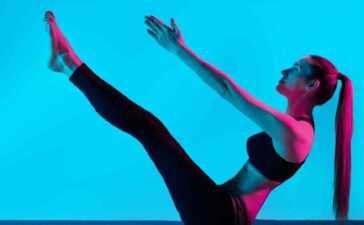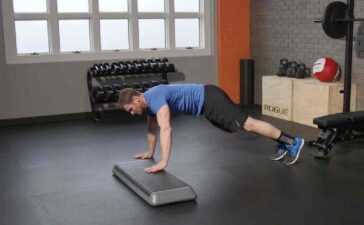By all accounts, Chicago Blackhawks’ right winger Patrick Kane should be slowing down. And in the 2017-18 season, when he was 29 years old, he did. He scored just 76 points in 82 games, a drop off from his previous two seasons.
And yet, in a sport where players tend to peak in their mid-to-late 20s, the three-time Stanley Cup winner had the best statistical season of his career the next year at the age of 30—and he’s just getting started.
Kane credits his performance to an unconventional fitness regimen developed by Chicago-based sports performance facility Tomahawk Science and its founder, Ian Mack. To get Kane ready for his best season ever, Mack created a program that included plenty of speed, mobility, and flexibility work. What it didn’t include: Weight training.
Why Kane Ditched the Weights
“For Patrick, thickening his muscle tissue and increasing his mass wasn’t the best way to leverage his skillset and amplify his advantages inside his sport,” Mack tells Men’s Health via email. The two worked together ahead of the 2018-19 season, and kept up the program to keep Kane in peak condition throughout the year.
Mack’s practice at Tomahawk breaks with traditional models of athletic strength and conditioning, often swapping weight training for modes of exercise—like plyometrics, Tai-Chi, yoga, velocity training and resistance band exercises—that better address the needs of the particular athlete.
Though Mack will sometimes create resistance for clients using bands or manual resistance (a method where a spotter or trainer uses his or her hands to apply resistance to the athlete), he often sticks to bodyweight training. “It’s simply not safe to overload the body in unstable positions, so anything that allows us to manipulate resistance without sacrificing movement or form is ideal for our athletes,” Mack says. “Traditional weight training is just one tool in what should be a pretty extensive tool box for performance training.”
In Kane’s case, the path to better movement and performance didn’t include deadlifts or bench presses. He was better served refining the fundamentals of human movement through exercises that combined Tai-Chi, yoga, and other practices to help him move safely and effectively. Every workout was based on body movements, with a focus on increasing muscle elasticity and getting Kane’s body to work as a single unit.
Movement Matters Most



Chase Agnello-DeanGetty Images
Like other professional athletes, hockey players’ bodies get beat up after years of intense training and competition. But unlike other athletes, hockey players don’t compete on their feet, they compete on skates, “which is very unnatural for the human body,” Mack notes. Competing in this unnatural position year after year tightens up the hips and shoulders, and wears down areas of the body that help keep pro hockey players stable. The result? Stability, range of motion, speed and power plummet, while the risk of injury goes up.
“Every individual’s needs are unique, but our general aim is to increase the range of motion of joints and challenge chief directions of movement,” Mack says. “Simply starting there can help people move better, feel better, and become healthier overall.”
By helping hockey players refine the basics of movement, Mack finds that their mobility, speed and health skyrocket.
For Kane, who’d finished the previous season feeling not-so-great, Mack’s unconventional program helped turn things around. After a disappointing 2017-18 season, Kane closed out the 2018-19 season with a career high of 110 points, spent an average of 22 minutes and 19 seconds on the ice every game, and was a finalist for the 2019 player-voted MVP award.
At 30, Kane shows no signs of letting up: “I honestly think I feel better now than I did in my 20s. I really do,” he told ESPN back in February, adding that he felt fresh every game.






